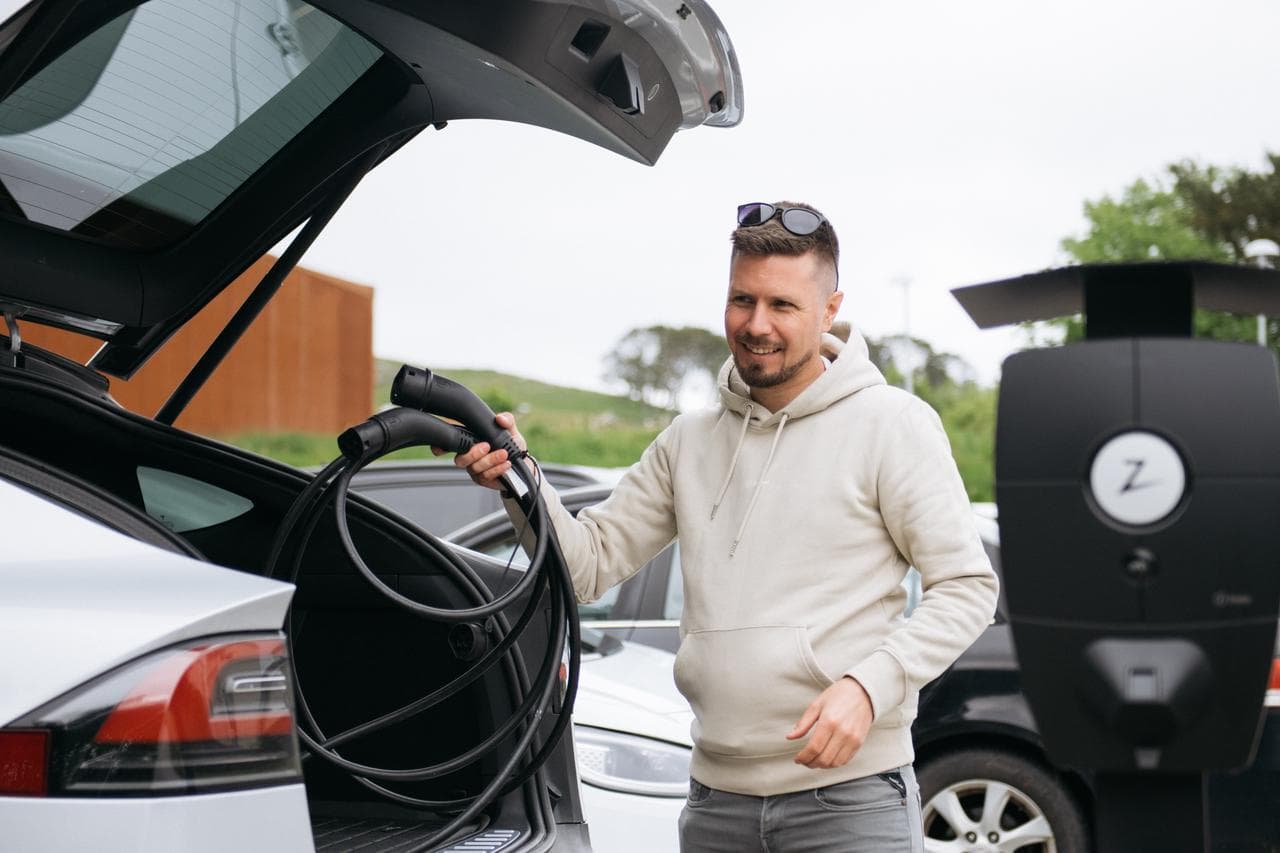Charging specialist Fredrik Hegland gives you a checklist of five points that are worth noting when you are going to introduce electric car charging to housing associations and co-ownership. This is because you will then have room for future electric cars, and because you want to save money by using the power in the smartest way possible.

Smart Solutions, Connectivity, and Efficiency: Key Factors for Choosing EV Charging Systems
When selecting an EV charging system, focus on smart solutions, networking capabilities, and efficiency, says charging specialist Fredrik Hegland.
For those without electrical expertise, understanding the EV charging market can quickly become a technical and potentially overwhelming task. However, you don’t need to dive deep into technical details to make a well-informed decision.
What’s the difference between kilowatts (kW) and kilowatt-hours (kWh)? What safety considerations should I take into account when choosing a charging system? And do I really need a charger that connects to the internet?
Understanding the context behind these questions can save you significant time and money when your housing cooperative or condominium decides to invest in EV chargers. We spoke to charging specialist Fredrik Hegland from the tech company Zaptec about the most important factors to consider when investing in a charging system for your housing complex.
1. Choose a Charger That Maximizes Available Capacity
To find the right chargers for your housing cooperative or condominium, look for a system that can utilize the existing power capacity of your building. The best charging systems are often those that make use of any surplus electricity already available.
"Many people think they don’t have enough power capacity. But in the evening, when people go to bed, they use much less electricity. Lights and appliances are turned off, freeing up capacity that can be used for charging," says Hegland.
Even housing complexes operating at full capacity during peak hours, like when residents are cooking, showering, and using appliances simultaneously, often have surplus capacity in the evenings.
"It’s important to choose a charging system that takes advantage of all available electricity when things are switched off," Hegland adds.
2. Don’t Focus Solely on Initial Investment Costs
When housing cooperatives or condominiums invest in charging systems, there’s often a tendency to focus too much on the upfront cost.
However, investing in a charging system is not a one-time expense. Cheaper options may come with hidden costs, such as a lack of scalability for additional charging points or missing useful features, leading to higher expenses later.
If a system needs to be replaced after a short time because it doesn’t efficiently use available electricity or cannot scale to accommodate all parking spaces, the cheapest option may become the most expensive in the long run.
"It’s important not to get fixated on the investment cost. Consider what it will cost to operate the system over time. A cheaper entry price may end up costing more in the future," Hegland advises.
3. Opt for a Charger That Accounts for Power Tariffs and Peaks
Investing in a system that addresses power tariffs and peaks can save money in the long run. Power tariffs are part of a new pricing model introduced by authorities to balance electricity consumption throughout the day. The cost of electricity depends on peak usage during the month.
"With a charging system that considers power tariffs, the system ensures you don’t trigger higher tariff levels, which can lead to more expensive electricity bills," explains Hegland.
In housing cooperatives with high energy usage, increased consumption due to EV charging could push the building into a higher tariff bracket, significantly raising costs. A smart system prevents this by managing power usage more efficiently.
4. Choose a Charger That Connects to the Internet
There are several advantages to choosing an internet-connected charging system.
Firstly, connected systems can receive software updates. Additionally, internet connectivity allows for remote troubleshooting. Companies like Zaptec can diagnose issues remotely, eliminating the need for physical service calls.
"Most issues are user errors. Resolving them over the phone saves time and money, providing a better user experience,"Hegland says.
5. Select a Charger That Tracks Consumption
For large housing cooperatives, monitoring individual energy usage can be challenging. Inexpensive charging systems often lack tools to track individual consumption, leading to shared costs among residents regardless of usage.
A high-quality system can track the energy consumption of each charger, generating reports on usage for each unit. For example, Zaptec’s systems provide free reports on energy consumption per apartment and integrate with third-party services that allow users to pay for their own usage through apps.
"This happens automatically, so the housing board doesn’t need to get involved. It saves time and effort," Hegland concludes.